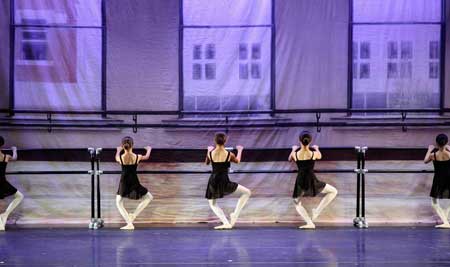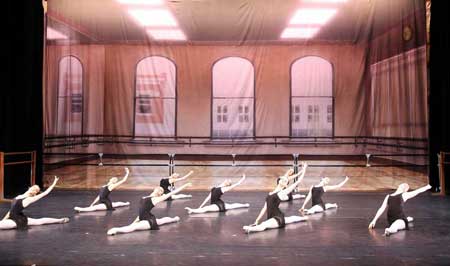Pre-ballet (5-6)
2 classes a week
These classes are designed to introduce your child to the very basic dance movements, develop a sense of rhythm, music and coordination.
It is mandatory to take two classes per week.


Pre-ballet (7-9)
2 or 3 classes a week
Classes at this level emphasize the correct body placement, coordination and control of the movement, stamina and self-discipline, help develop imagination and enjoyment of dance. Program starts with floor exercise designed to build flexibility and muscles strength, follows by traditional barre and center work.
Classical Ballet (9 & up)
Minimum 3 classes a week
A wide spectrum program for beginner, intermediate, and advanced students. Dance technique at these levels becomes more complicated and demanding. Students will have a choice to continue with ballet training as part of their professional career. In this case extra hours of intensive training may apply weekly.


Floor Barre and Stretch
Floor barre is a combination of floor exercises and stretching, which develops strength and flexibility.
This system has helped a lot of people not only to recover from injuries, but to understand placement and control.
This system allows to keep your body in a condition without the need to put weight on the legs and the back by standing at the barre.
Pointe
Dancing on pointe is a base of female ballet technique. Young girls are ready for pointe work when their ankles and feet have been strengthened, and the majority of basic classical technique has been learned.


Men's ballet technique
After learning fundamentals of classical ballet boys should take a special men’s ballet class in order to develop their technique. Specificity of male ballet technique is a variety of jumps and turns, which are completely different from the elements of female technique.
Character Dance


Historical dance
Is there a better way for children to learn about past eras than actually participate in an activity such as dancing? We teach children simple and age-appropriate dances of various historical periods, while informing them about other contexts such as costumes and music.
Variation


Partnering
Jazz (5-10)


